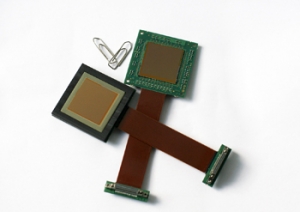Sep 28 2010
Research scientists at the Fraunhofer Institute for Microelectronic Circuits and Systems (IMS), have created a CMOS (complementary metal oxide semiconductor) chip or image sensor capable of enduring very high temperatures ranging between -40 and +115 degrees C.
 CMOS chip
CMOS chip
The present day vision sensors, CCD (charged coupled device), work accurately for temperatures around 60 degrees C. The new sensors to be used mainly as electronic parking support systems must work efficiently in high temperature areas and in bright sunlight too.
According to Werner Brockherde, IMS department head, the chip was able to withstand both icy and very hot temperatures. The researchers have created pixels showing minimum dark current, with great difficulty. An addition of eight degrees to the temperature doubles the dark current value, leading to reduction in dynamics and creation of image noise. Degradation of the image also takes place because of phenomena such as ghosting or fuzziness in artifacts.
The sensor’s image size (2.5 x 2.5 cm) also offers a special provision of getting directly connected to an electronic image intensifier, which is needed for applications having weak illumination, or for recording images in the UV or IR range. Its resolution is 256 x 256 pixels, with an exposure latitude of 90 decibels, providing more optimized and contrast features, in bright and shadow areas. As it efficiently absorbs light, it is suitable for low-light conditions and it is also capable of supporting both asynchronous and synchronous shutter cameras, which prevent fuzziness and motion artifacts.
Brockherde stated that the sensor was produced in their semiconductor factory. He felt that future markets may include chemical and steel production factories and rolling mills producing sheet metals. This new sensor will be exhibited at the November 2010 Stuttgart Vision trade fair in stand 6 D12.